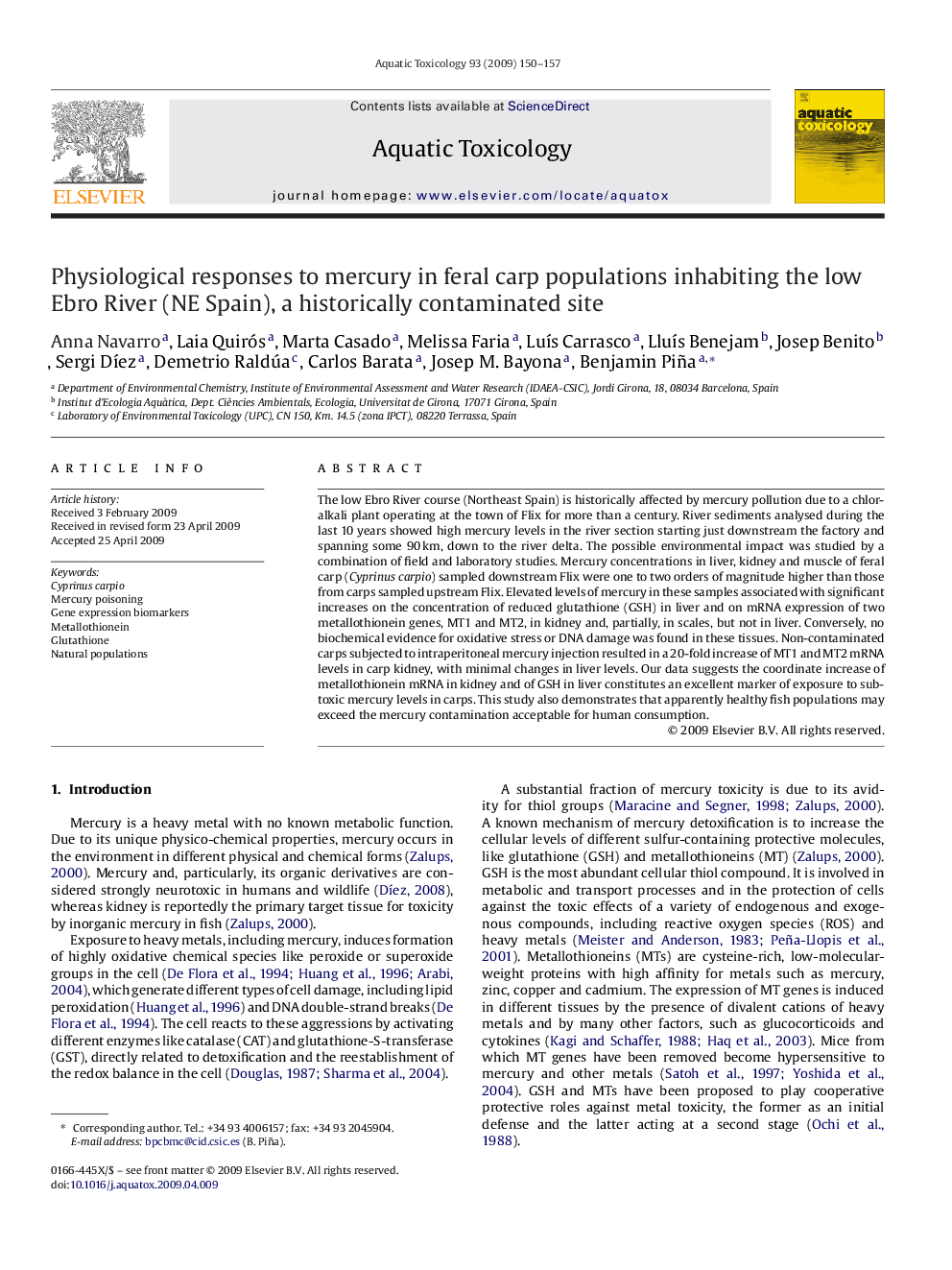| Article ID | Journal | Published Year | Pages | File Type |
|---|---|---|---|---|
| 4530514 | Aquatic Toxicology | 2009 | 8 Pages |
The low Ebro River course (Northeast Spain) is historically affected by mercury pollution due to a chlor-alkali plant operating at the town of Flix for more than a century. River sediments analysed during the last 10 years showed high mercury levels in the river section starting just downstream the factory and spanning some 90 km, down to the river delta. The possible environmental impact was studied by a combination of field and laboratory studies. Mercury concentrations in liver, kidney and muscle of feral carp (Cyprinus carpio) sampled downstream Flix were one to two orders of magnitude higher than those from carps sampled upstream Flix. Elevated levels of mercury in these samples associated with significant increases on the concentration of reduced glutathione (GSH) in liver and on mRNA expression of two metallothionein genes, MT1 and MT2, in kidney and, partially, in scales, but not in liver. Conversely, no biochemical evidence for oxidative stress or DNA damage was found in these tissues. Non-contaminated carps subjected to intraperitoneal mercury injection resulted in a 20-fold increase of MT1 and MT2 mRNA levels in carp kidney, with minimal changes in liver levels. Our data suggests the coordinate increase of metallothionein mRNA in kidney and of GSH in liver constitutes an excellent marker of exposure to sub-toxic mercury levels in carps. This study also demonstrates that apparently healthy fish populations may exceed the mercury contamination acceptable for human consumption.
